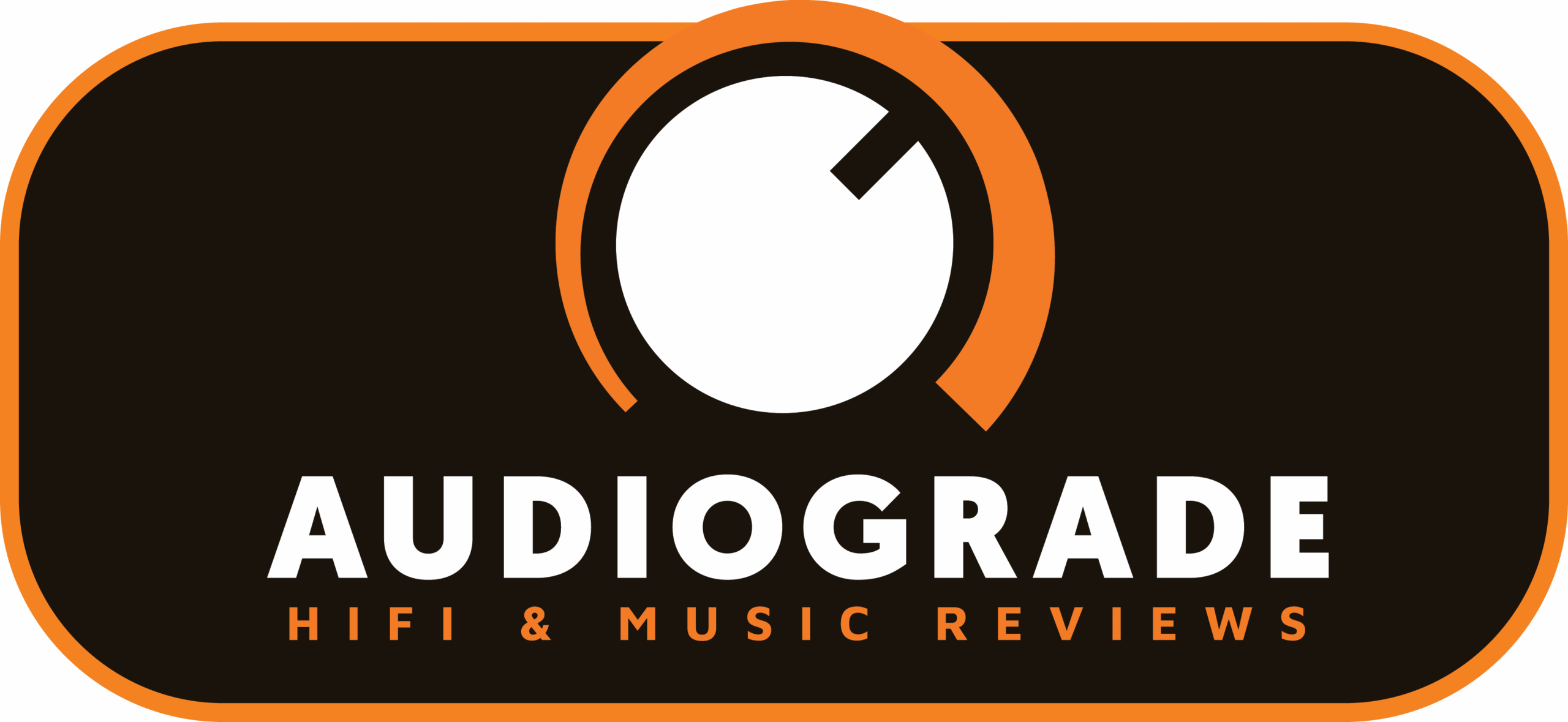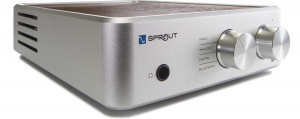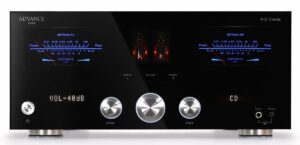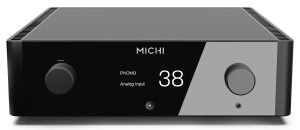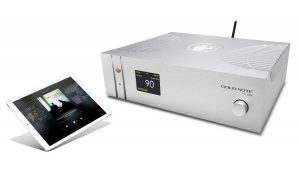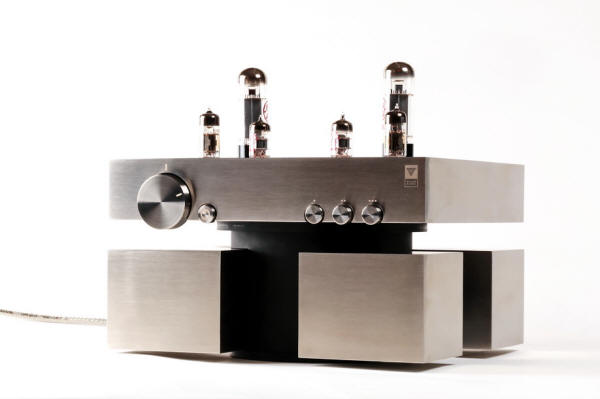
New audio brands emerging on the market have become an everyday experience. Each year I come across new brands, names and designs, the same with new ideas for a product. Less often, one can say scarcely, I come across new business ideas. The transition from a "device" (speakers, accessories, cables etc.) to a product is a long, painful and pricey process. Few can achieve success. Great many manufacturers stop at "civilized" DIY, i.e. an audio component manufactured in a few pieces a year without proper technical documentation, not to mention any safety certificates. The most important factor here is money.
The traditional approach is a bank loan or a UE grant, for instance. It is a hard and tough way, and it is easier for a camel to go through the eye of a needle, if I may say so, than to get the money from either of the two sources. A more common practice is for the designer to find a sponsor who finances the project. This is exactly how Abyssound came to existence; its owner runs a company that makes measurement systems for various industries. G•Lab has a similar modus operandi (the original name of the company is G•Lab but from now on I am going to use a simplified version, ‘G Lab').
G LAB Design Fidelity is a brand owned by CCI (Comp Innovation Center). The amplifier itself is manufactured by ELZAB. ELZAB was founded in 1969 and now it manufactures cash registers, among others. Both companies belong to the COMP S.A. capital group. The person responsible for venturing into the audio territory is Mr. Julian Kozankiewicz, the executive director of CCI.
Here starts the most interesting part of the whole story because things like this do not generally happen in audio industry. Mr. Kozankiewicz noticed Mr. Główka who was a student of Fine Art Academy in Cracow and already had a finished, well thought through design that was to Mr. Kozankiewicz's liking. Beside the sheer luck, which is always helpful, there must have sparkled something else. Proof? It is enough to have a look at the Block amplifier and see the result of this trilateral cooperation: the machine has a very distinctive look; its simple functional design brings new quality to an audio idiom. At the same time it has pro-audio written all over it as if it was made by a purist designer if he was capable of such a feat.
The Block (trademark BLOCK) is an integrated tube amplifier with a solid state power supply. It is divided into several segments, each containing a section that should be separated from others by the longest distance possible. It is notoriously difficult to achieve it in an integrated affair but, apparently, not impossible.
The most harm is done by the transformers, including both the power supply and output transformers. Here, the former is housed in a steel cylinder that constitutes the core of the amplifier. The output transformers and a choke used in plate power supply are placed in three of the four cuboids located symmetrically around the center cylinder. A side effect is that the center of gravity, which is often neglected in such design, is very low. Electronics is moved to a separate chassis that is mounted to the top of the cylinder. Thus we have a great design and a well thought through electrical and a mechanical construction. The amplifier's power output is a modest 5,5 Watts from a single EL34 tube per channel. This power pentode operates here in a triode mode, hence we should make sure to use speakers of more than average sensitivity. The Block is equipped with a MM tube phono preamplifier. The latter employs ECC88 triodes, one per channel. To show me all that and to tell me about the project and about himself, Mr. Mateusz Główka came all the way from Bielsko-Biała, where he lives.
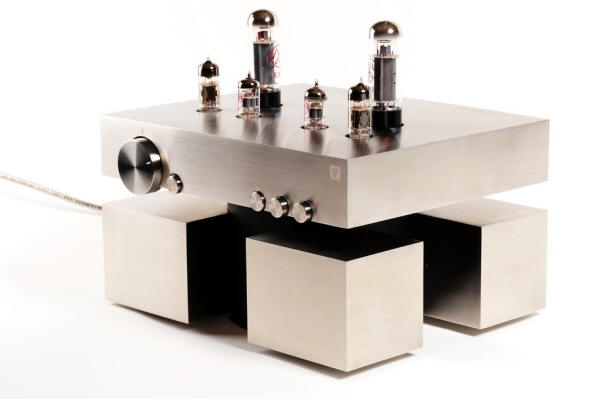
A few simple words about…
G•LAB DESIGN FIDELITY
DIONIZY KONIECZNY
PR Konieczny
Wojciech Pacuła: Who is the manufacturer and the owner of the brand?
Dionizy Konieczny: The owner of G LAB Design Fidelity is Comp Centrum Innowacji Sp. z o.o (Comp Innovation Center Ltd.) and the manufacturer of BLOCK is ELZAB S.A. Both companies belong to COMP S.A. group.
Whose idea was to make such an amplifier? Who assembled the design team?
Julian Kozankiewicz came up with the idea of making the amplifier—he is an executive director of Comp Innovation Center Ltd.—after reading a note about Mateusz Główka in Wired magazine. He got Dionizy Konieczny (Sales Manager of G LAB Design Fidelity now) interested in this venture, who at first stages of the project gathered all the interested parties and convinced them that this project made sense and could be a source of pride for all. Those two gentlemen are responsible for this great project of Mateusz Główka to come true. Now G LAB Design Fidelity is a three men team.
The output tubes work in a pentode or triode mode?
Triode.
Which tubes drive the output ones?
6N6P.
The phono amplifier is a solid state design?
Tubes only, no silicon.
Are there any plans to extend the series? If yes then what are they?
We are currently working on a new project. The team is the same—we count on cooperation with Mateusz Główka and we have a prototype of product that is complementary to the BLOCK. We hope to launch it in May 2015 in Munich.
MATEUSZ GŁÓWKA
Designer
The BLOCK is a dream-come-true for me. The dream of my own project sold from "the shelf". One of my passions, apart from cars, is music and its impeccable quality. On my third year of studying Industrial Design at the Academy of Fine Arts in Krakow I joined the Development of a New Product Workshop. Then I met Mr. Marian Kopecki who worked with students sharing his knowledge and experience. Under a careful supervision of Dr. Marek Liskiewicz there came to existence a project and then a prototype of a tube amplifier.
It was important to me to have a fresh approach. It was only logical to put the heaviest elements as low as possible. This in turn created a possibility to separate the sources of noise and distortion, i.e. transformers, from the electronics. Obviously the high requirements concerning electronics set by Mr. Kopecki had to be met: good isolation, the shortest signal path possible and accessibility. With these in mind, the design is a functional one and very modern at the same time.
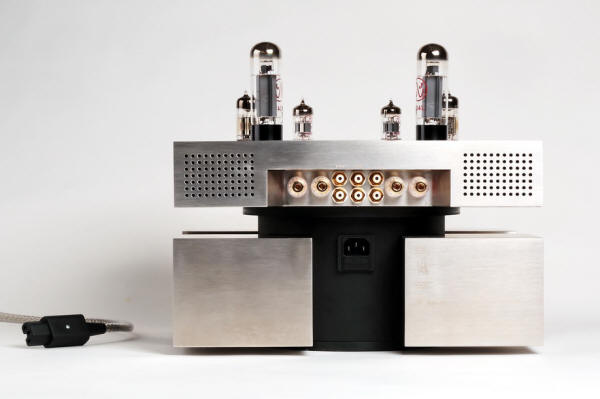
As time went on, the BLOCK still remained somewhere at the back of my head as something yet to be done. One day I published the design on a well-known design website. It gained a lot of interest from other sites publishing information about the amplifier so I decided to show it during the Salone del Mobile fair in Milan. The design attracted Wallpaper Magazine and then it was published in Wired World. One afternoon I got a phone call from Dionizy Konieczny, a man who knows the world of music and is a DJ with a very sensitive ear himself. That was the beginning. It took almost two years to prepare the design for production with all the details. The metallic click of BLOCK's input switch will haunt me forever.
Music
• Ariel Ramirez, Misa Criolla, José Carreras, Philips/Lasting Impression Music LIM K2HD 040, K2HD Mastering, "24 Gold Direct-from-Master Edition UDM", CD-R (1964/2009).
• Art Farmer and Jim Hall, Big Blues, CTI/King Records KICJ-2186, "CTI Timeless Collection 40", CD (1978/2007).
• Artur Lisiecki Acoustic Harmony, Stone & Ashes, Fonografika, 559040, master-tape copy, CD-R (2010); reviewed HERE.
• Ash Ra Tempel, Ash Ra Tempel, MG•ART/Belle, 101780, SHM-CD (1971/2010).
• Ashra, Belle Alliance Plus, MG•ART/Belle, 121914-5, 2 x SHM-CD (1979/2012).
• Cyrus Chestnut, Midnight Melodies, Smoke Sessions Records SSR-1408, CD (2014).
• Kanaan, Duda, Rudź, Hołd, Solition SL 380-2, CD (2014).
• Martin Kratochvil & Jazz Q, Temné Slunce, soundtrack, GAD Records GAD CD 018, CD (1980/2014).
• NEU!, NEU!75, Brain Records/P-Vine Records PCD-93529, "NEU! Story 3", CD (1975/2001).
• Patrick Noland, Piano Gathering Light, Naim naimcd011, CD (1994).
• Pieter Nooten, Heaven, Rocket Girl rgirl92, 2 x CD (2013).
• Porcupine Tree, Deadwing, Lava 93437, CD (2005).
• Radiohead, Kid A, Parlophone/EMI 27753 2, CD (2000).
• Skrzek & Rudź, The Stratomusica Suite, Generator GEN CD 032, CD (2014).
• Stan Getz/Joao Gilberto, Getz/Gilberto, Verve/Lasting Impression Music LIM K2HD 036, K2HD Mastering, "24 Gold Direct-from-Master Edition UDM", CD-R (1964/2009).
• The Oscar Peterson Trio, We Get Requests, Verve/Lasting Impression Music LIM K2HD 032, K2HD Mastering, "24 Gold Direct-from-Master Edition UDM", CD-R (1964/2009).
How would that sound on headphones, I wonder, was the first thought that entered my mind just after the first notes of Klan's Z brzytwą na poziomki reached my ears. The thought had some intensity as the great part of my private auditions, which I have time for only in the evening and at night, is done on the headphones. It is of paramount importance then that the quality is as close as possible to what I can hear during the day via the speakers. I, then, do have a collection of the best available headphones and quite a few headphone amplifiers. The moment I spot a 6.35 mm headphone jack in an amplifier or a preamp, I always first check the sound from this output, not from the speakers. Some of the integrated amps turn out to be really good in that area. The best example is the Leben CS-300 in many of its incarnations, which together with the HD-800 from Sennheiser, the K701 from AKG or the T1 from Beyerdynamic is my reference system. My recent discovery is a hybrid amplifier from Mr. Czyżewski, the Linear Audio Research IA-120H, the missing other half of the HiFiMAN HE-6 magnetostatic headphones that are too demanding for most any other amplifier. The Block wouldn't be capable of properly driving the magnetostats, either, I have no delusions here, but the Sennheisers, the Ultrasone Edition 5 (my most recent purchase), the Beyerdynamics, the AKGs and perhaps even the Audeze LCD-3 would have been more than happy to have a go at penetrating the little hole of the G LAB amplifier (if there was one, that is).
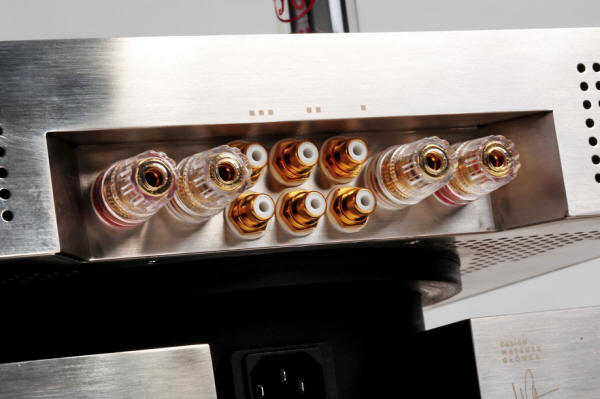
Their happiness would have been based on an exceptionally good sound offered by the amplifier and its great tonal balance. Five and a half Watts it delivers is less than nothing; that much power is usually delivered by ordinary amps in pure class A before they enter class AB, whereas here it is the total power output. And you know what? I would have never guessed it is only a few Watts at work. My Harbeths M40.1 are a very difficult load and even though they sport quite a leveled impedance curve, to achieve their full potential they need a powerful top quality amp like my Soulution 710 or the Accuphase A-200 monoblocks that I happened to review for "Audio," or like the Octave MRE-220 monoblocks or the amps from Vitus Audio.
The speakers do have their weak spot, though, which can be revealed by the best tube amps. This has nothing to do with the specifications provided by their manufacturer because those suggest using small tube amplifiers but real live tests prove to the contrary. I cannot explain this in any way possible, the explanation is probably a trivial one; it is physics, after all, but it still eludes me. The best amplifiers with a tube-based output stage do not have to be powerful to achieve seducing sound. Devoid of many sonic aspects that can only be provided by sheer power, but with some that can be offered only by amps of the kind of the Triode TRX-M300 Reference Edition, the 8 Watts per channel Japanese monoblocks or the even less "power capable" Block.
The sound of the Polish amplifier can bring one to one's knees with its holistic approach to the music material. Any kind of material. We deal here with a design that lends a helping hand to the recordings which we would probably have rejected with many other amplifiers or at least would have found something to complain about, at the same time being dead serious about the best ones that deserve our respect.
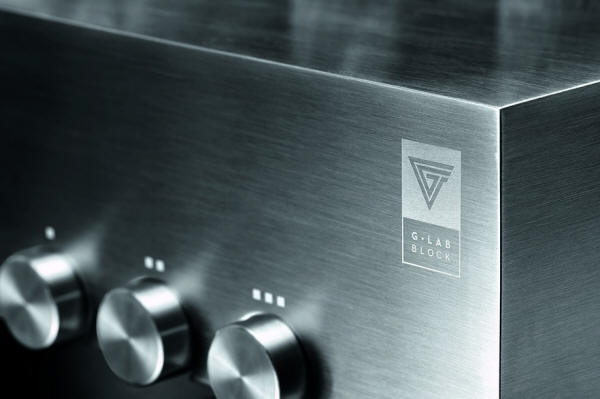
A good example of the first tendency, i.e. "helping" a recording with less than perfect sound, could be the recent issue from GAD Records, a compilation of radio recordings titled Nerwy miast, by the Polish band Klan. The sound is clean but at the same time light and relatively flat. The amplifier under review presented it in a slightly different way, preserving the "patina" of the recordings from the 1969/70s and showing a nice bass, with convincing kick drum and great, strong guitar. The treble was delicate, and only on the track Z brzytwą… the top end "jumped out" in front of the mix. But this is simply that kind of a recording. The sound was thick and exceptionally vivid. These are all mono recordings and yet the Block managed to fill the space between the speakers showing large, three-dimensional images.
Actually, the amp has its own approach to the problem of space in general. The foreground is strong and large, the background is equally large and saturated but is shown closer. This is a modification of which one needs to be aware. The recordings from Naim such as Patrick Noland, for example, presented from a distance and in a slightly dark manner, were shown closer by the Block, almost tangible. The piano from Piano Gathering Light was close and more distinct. But not by overdrawing the edges or contouring, nothing of the kind. The piano's body was so saturated and thick that one was under the impression of being "there and then". The space was preserved, though, and it was spacious, with low reverb. The grand piano was simply closer.
There were quite a few such paradoxes and each one of them added to an extraordinary satisfying experience. The high frequencies were strong, with a high energy but there was no sharpening or brightness. In a blind test I might point to the Block as a tube amp, because of its silky like cymbals and natural sounding strings and wind instruments. Surely not because the sound is "warm."
I cannot find any other explanation except that we are dealing here with exceptional resolution. That would also explain extraordinary differentiation. The instruments play together as well as each one separately in their own space, tonality and articulation. And this happens both on Midnight Melodies, a great recording of a jazz concert from the Smoke club and on the great album Neu!75 from the 1956 recording of Jim Hall Trio as well as with the electronica of Krzysztof Duda and Przemysław Rudź on Four Incarnations.
The amp gives the music rhythm and swing, and makes it interesting. Even such a boring material as that from the newest Pieter Nooten's album Heaven (I am his loyal fan so I have that one) was listenable and I could find something of interest in it from time to time.
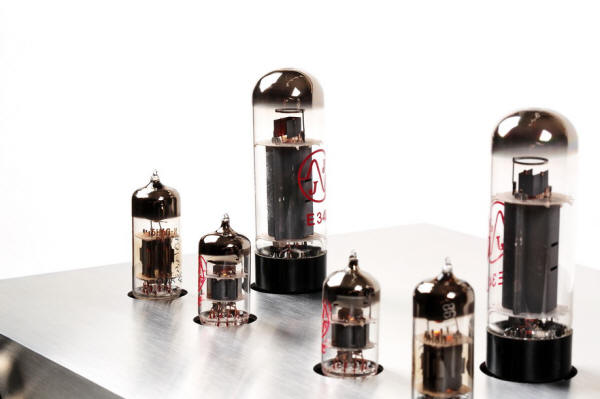
The Block does not attempt to correct the recordings. One might think the other way round from what I have written so far but that would be just a general observation, from a distance. Looking up close, one can exactly see the problems of any recording and identify its weak points. But it takes some effort as they are not exposed. They are sort of hidden behind what is good.
And then the rhythm! If someone thinks that to properly show the rhythm amps require hundreds of Watts they do not know what they are talking about. Most of the concerts mean thousands of Watts and most of them is a bang up job as far as the rhythm is concerned. Strong attack is not the same as the rhythm, the edges are not equal to timing. 5.5 Watts from the Block is enough to move the song and turn on its internal atomic clock.
Small wattage amplifiers are special purpose audio components. We will not use them to play Soundgarden, Pantera, Sepultra and AS/DC in a way the fans are used to, convinced that it is the only right sound. What I am talking about here is a booming bass, treble going "tsss, tsss" as well as electric guitar strings slicing through the air. Fans usually strive to recreate a concert experience remembered from a live event they took part in. They want to hear again the screeching noise, overdriven sound and ubiquitous thunder. I go to music concerts, including rock concerts, often enough to know that it is a completely different musical reality from the intended sound of those records. The Block will render the CDs we are talking about the way they were meant to and could sound if someone was interested in the sound not just sheer oomph. The only limitation is the volume level (SPL) it is capable of achieving. Even with super sensitive speakers the power limitation will prevent us from rocking the whole street, neighborhood or even our house. As long as we can live with that, we get a sound that suggests a much higher power output.
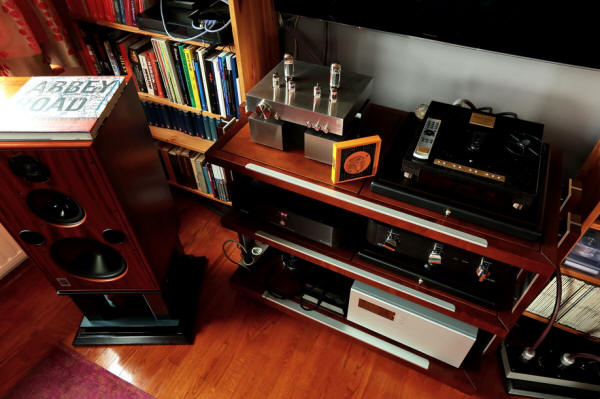
Summary
Hell then, we know one limitation of this amplifier. However, it directly results from the technical specification, i.e. from the selected design concepts. The things that cannot be seen are also connected with the choices made. Like selectivity, which is only one-dimensional here. The sound is deep and full with excellent resolution, but the ability to present edges and different planes, and to separate the instruments is not so good. The amplifier shows large planes rather than holography. Lower bass is strong, which is really surprising, and there is lots of it. It also has a very good tonal quality. The tightness of the bass range and its definition are, however, only conventional. It is hard to talk about differentiation of the bass guitars, bass drum or the deeper extension of the grand piano. It is barely audible, though, because higher harmonics are very well reproduced and coherent, which suggests otherwise. This is a common denominator of the great many single ended amplifiers with a single low power output tube and nothing can be done about that, c'est la vie. This is not disturbing, however, and I am pretty certain that had I not written about it most music aficionados wouldn't give a…
The external design is rather daring and bravely does away with traditional "warm" tube amplifier look. It is good, really good that audio can be beautiful not only in its soul (the music) but also in its body (the looks). User friendliness is scarce, the Block does not sport a remote, switching between inputs is reminiscent of the old Taraban radio set from the 1970s and 1980s and there is no indicator light to tell us whether or not it is powered on (green or amber). There is no headphone output either. But there is a tube phono preamplifier on board, which will be a joy for many as it is a nice little addition. A step-up transformer is required for MC cartridges but this should not be a problem.
As I have already mentioned, this is a special amplifier directed to special type of users: aware of themselves, their own needs and abilities; mature. Pair it with highly sensitive speakers and have a ride! We give this amplifier the RED Fingerprint award.
Sound quality: 8-9/10
DESIGN
I must admit I have never seen something like that, even though it seems to be a simple solution. However, it is the simplest ideas that are most brilliant and we only realize how close they have been to us when someone invents them for us. This solution has been known for years: it involves the separation of the power supply and electronics sections. This is usually done by moving the power supply to a separate chassis, coupled with the main unit using a multi-core umbilical cord. A lot of manufacturers do it this way with good effect. While the manufacturer can deal with the negative impact of additional wiring in the path, the bulkiness of such a system and its dubious aesthetic value remains a problem.
Mr. Mateusz Główka, a graduate of the Academy of Fine Arts, who designed the Blocks enclosure did a great job, together with Mr. Marian Kopecki, responsible for the electronics. They sectioned off individual components and moved them to separate enclosures, combining the latter into one functional, compact unit.
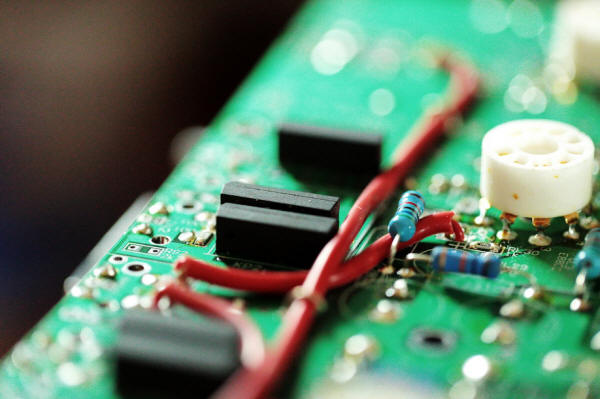
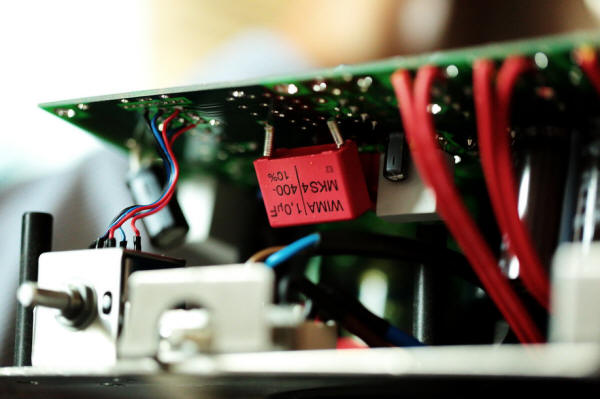
The basis is a wide cylinder with solid walls. It houses the power supply, including a large transformer. The lower part of the cylinder also makes for the amplifier's base, hence there is no separate feet. On top of the cylinder there is a flat cuboid which is the actual enclosure in other amplifier designs. Its top panel features vacuum tubes and other electronic components are assembled on a PCB inside. The signal is amplified in the three tubes per channel: the JJ E88C dual triode (MM phono stage), the 6N6P, another dual triode of Russian production (input stage and driver) and the JJ E34L pentode (output stage). The faceplate sports a large, flat volume knob and four push buttons: one of them turns on the power and the other three are used as input selector. The buttons needs some strength to be pushed, which is a conscious choice on the designer's part, who wanted such a "physical" feel to it, and there is no visual indicator of the selected input or power-on state. The latter is only indicated by the glowing vacuum tubes' filaments.
At the bottom, the four small cuboids placed in the corners around the cylinder house output transformers and a plate power supply choke. In a single ended triode circuit, the output transformers are key to a good sound as they shape the overall sonic characteristics. The ones used in the Block have been designed by Mr. Marian Kopecki and made in his company MarioVox, just like the whole electronic circuit. It is attested by an appropriate logo that features on the circuit board.
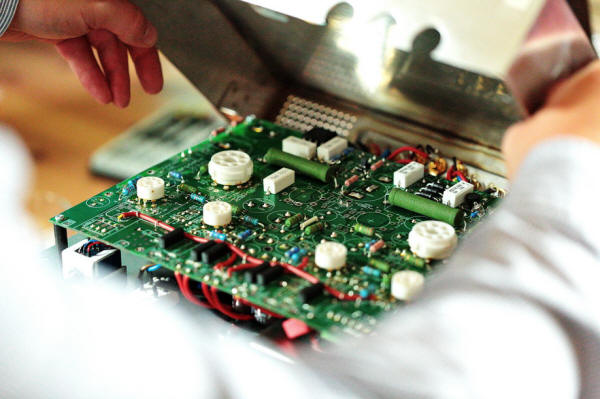
Input signal connectors and speaker terminals are located in a deep recess on the back of the unit. It may not be very convenient but one can live with that. It is evident that the designer aimed to shorten the signal path and to separate the different amplifier's sections. Coupling capacitors are large Wimas and the potentiometer is an ALPS model. Inputs are switched with reed relays, also used by McIntosh, among others. These are top quality components.
The Block is a tube amplifier with solid state power supply. Rated power output is merely 5.5 Watts per channel, as the output stage employs a single EL34 power pentode operating in single ended Class A. The amplifier includes a quality power cord that has nothing to do with the plastic crap of PC power supply variety, which often comes as standard. Here we get the Ölflex Classic 110 CY, a thick braided shielded cable from Lapp Kabel. It uses copper stranded wire in the screen of tinned copper. It is equipped with quite solid plugs from Castorama. However, if you really want to use this power cord, you should terminate it with Oyaide or Furutech plugs.
The amplifier's enclosure is made of stainless steel. The machine has a very distinct shape and stands out from all other amplifier designs that I know. Its owners will know that they have something special in their hand, also indicated by special inscriptions on the rear panel, with the signatures of its makers, Mr. Marian Kopecki (electronics) and Mr. Mateusz Główka (external design).
Specification (according to the manufacturer)
Power Output: 2 x 5,5 W
Frequency Range: 30 Hz – 30 kHz/-2 dB
Power Consumption: 98 W
Inputs: 2 x line level inputs, 1 x phono input (MM)
Tube Complement: 2 x E34L, 2 x E88C, 2 x 6N6P
Weight: 18 kg
Dimensions: 339 x 288 x 208 mm (WxDxH, without tubes)
Price (in Europe): 4100 euro/plus shipping
ELZAB
[email protected]
http://glabdefi.com
Text by Wojciech Pacuła
Images by Wojciech Pacuła | G•LAB Design Fidelity
Translation by Andrzej Dziadowiec







